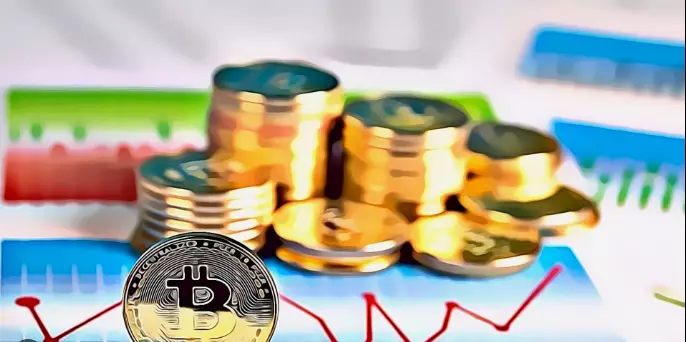Bitcoin has recently been experiencing considerable fluctuations in price, currently hovering between $87,000 and $87,500. For many investors watching from the sidelines, these figures may appear insipid, particularly as they await a bullish rally toward the psychologically significant $90,000 mark. The anticipation surrounding economic indicators, such as the Consumer Price Index (CPI) report scheduled for November 13, is contributing to the current sentiment within the market. Analysts regard this data as crucial since it reflects consumer purchasing trends and can serve as a barometer for inflation.
The interplay between inflation figures and Bitcoin’s price trajectory cannot be overstated. The CPI data informs not only general market sentiment but also the monetary policy decisions made by the Federal Reserve. Increases in inflation could compel the Fed to raise interest rates, causing a ripple effect in various asset classes, including cryptocurrencies. Conversely, if inflation stays contained, the Federal Reserve may consider lowering interest rates to stimulate the economy, historically leading to an upsurge in Bitcoin prices as investors look for higher returns in riskier assets.
Prominent crypto strategist Michaël van de Poppe has voiced opinions regarding the current market conditions and their implications for Bitcoin. His projections emphasize potential price corrections, theorizing that a 10% pullback might occur before the CPI data announcement; a range between $75,660 and $81,193 has been suggested as the target for this correction. Such forecasts underscore the importance of setting realistic expectations in a volatile environment.
Van de Poppe’s analysis points to an interesting dichotomy: while a stable or declining CPI could fuel investor confidence and drive significant inflows into Bitcoin and other cryptocurrencies, any unexpected uptick in inflation could lead to substantial market re-adjustments. This insight reflects an understanding that the crypto market operates not just in isolation but is intricately connected to macroeconomic trends, regulatory developments, and investor psychology.
As the CPI release looms on the horizon, the sentiment within the cryptocurrency market remains divided. While some experts maintain a bullish outlook—arguing that positive CPI numbers could spur Bitcoin prices upward—others caution against undue optimism. Historical patterns indicate that while many moments of positive CPI data are followed by price surges, this outcome is never guaranteed, particularly in such a speculative marketplace.
For many seasoned investors, the focus on the long-term viability of Bitcoin seems to overshadow short-term fluctuations. Growing adoption and integration of Bitcoin into traditional finance, potential regulatory clarity, and increasing institutional interest are encouraging factors that support a more optimistic outlook for the cryptocurrency.
Political changes, such as the incoming administration of newly-elected President Donald Trump, introduce another level of complexity to Bitcoin’s already intricate ecosystem. Van de Poppe suggests that initial regulatory measures could be beneficial for Bitcoin, stimulating market interest and potentially propelling prices higher. However, unforeseen long-term consequences of regulatory actions may emerge, especially if inflation control becomes contentious.
The dynamic nature of economic policy and its implications for Bitcoin’s perceived value highlight the importance of adaptive strategies among investors. The current environment demands careful monitoring of forthcoming economic reports and political developments, as these can significantly influence investor behavior.
As Bitcoin embarks on its journey of price discovery amidst a rapidly changing landscape, caution seems prudent for investors navigating this unpredictable environment. With Bitcoin presently trading at approximately $87,509—a gain of 2.1% for the day and 17.2% over the week—staying informed on economic indicators and potential market shifts is vital.
While short-term volatility in Bitcoin poses risks, it also presents opportunities for astute investors who can read market signals effectively. Continuous learning and adaptation will be keys to unlocking the potential that Bitcoin and the broader cryptocurrency market exhibit in the coming years.

